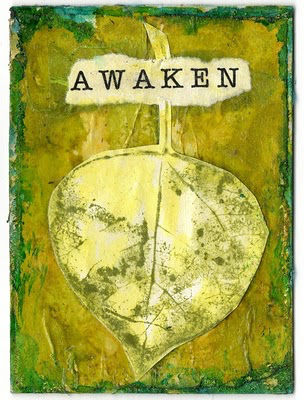Health
Standing With the National Endowment for the Arts
Download these articles on arts and health just in case they disappear.
Posted January 26, 2017

Over the past several years, I have referred readers to the National Endowment for the Arts, the independent federal agency that “funds, promotes and strengthens the creative capacity” (NEA, 2017) of communities throughout the US by providing diverse opportunities for participation in the arts. In particular, it has become an excellent resource of knowledge and reports on our growing understanding of the value of the arts in health and wellness. I also believe in this agency as a cultural symbol for the arts in our country. Truth be told, the National Endowment for the Arts (NEA) has historically provided a limited amount of financial support to art therapy, the creative arts therapies (music, dance/movement, drama and creative writing/poetry) and the arts in healthcare. But the fact that it exists is key to how the arts are increasingly recognized as approaches to health and well-being. For example, the NEA recently has co-sponsored an arts-based program that intends to provide various arts therapy services and community arts to our nation’s military (see Creative Forces on NEA site). I too have been the fortunate recipient of NEA funding for art therapy programming with children who have survived abuse and violence and pediatric and adult cancer patients. While the funding paid only a small portion of the costs of my work, the fact that I was able to obtain NEA support made all the difference in getting the additional funding necessary to continue providing art therapy to these individuals over many years.
The possible elimination of the NEA and other small agencies has been reported by sources such as The Hill, Americans for the Arts and other groups over the past week. These reports do not constitute a budget plan per se and thus no final policy has been presented by a Trump-Pence Whitehouse—yet. But there are many members of Congress who have wanted to jettison the NEA for years, claiming it is a necessary action to reduce the deficit even though this agency costs very little to maintain when compared to other budge line items. So I take any discussion of the dismantling of the NEA very seriously at this point in time and I believe all who support and understand the multiple roles the arts play in supporting health and well-being should keep on top of this evolving situation too.
To my knowledge, the US creative arts therapies leadership have been noticeably silent so far in discussing the possible elimination of the NEA. Yes, there are plenty of moving parts to keep track of lately and everyone is feeling overwhelmed about which shiny object to pay attention to. But for those committed to the availability of arts and health programming, the fate of the NEA (and the National Endowment for the Humanities and Public Broadcasting System) is worth a watchful eye as well as some pre-emptive advocacy. To this end, I have compiled some documents to help you articulate why our nation must maintain NEA, underscoring the multiple “arts and health” benefits. If anything, a phone call to your representatives or a visit to their offices to explain how the arts can make a difference in everyone’s lives can help; there is also an online petition to sign (however, understand that your own voice via regular phone calls to your reps is a more effective strategy). Even if you choose to do nothing, please take the time to either read or download these articles and reports—because if the NEA is indeed eliminated, this information may not be present on any federal site in the future. Here are some important resources for your own knowledge and to share with your representatives in Congress:
http://www.rand.org/content/dam/rand/pubs/research_briefs/RB9106/RAND_RB9106.pdf Rand Foundation Brief on the values of the arts.
https://www.ojjdp.gov/mpg/litreviews/Arts-Based-Programs-for-Youth.pdf Arts-Based Programs for Youth
https://www.ojjdp.gov/mpg/Topic/Details/479 Arts-Based Programming and Arts Therapies: Office of Juvenile Justice and Delinquency Prevention
https://www.arts.gov/sites/default/files/summit-on-creative-aging-feb2016.pdf Summit on Creative Aging
https://www.arts.gov/sites/default/files/arts-in-early-childhood-dec2015-rev.pdf Arts in Early Childhood
https://www.arts.gov/publications/how-creativity-works-brain How Creativity Works in the Brain
https://www.arts.gov/sites/default/files/guide-to-community-engaged-res… Guide to Community Engaged Research in the Arts and Health
http://www.americansforthearts.org/sites/default/files/pdf/2014/by_program/research__studies_and_publications/one_pagers/ArtsInHealthcare.pdf The Arts in Healthcare: State of the Field Report
Be well,
Cathy Malchiodi, PhD
©2017 Cathy Malchiodi, PhD
For a statement on the NEA and its possible elimination, please see the Americans for the Arts, Letter from Robert Lynch, January 26, 2017.
.


